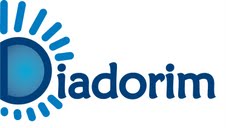Distúrbios do Sono e Tempo Total de Sono em Crianças com Deficiência Visual
DOI:
https://doi.org/10.13037/rbcs.vol9n30.1411Keywords:
Cegueira, Baixa visão, Criança, Adolescente, Transtorno do sono.Abstract
Os distúrbios do sono são pouco conhecidos na faixa etária pediátrica e pesquisas que contemplem o comportamento do sono das crianças com deficiência visual também são raros. A atuação dos profissionais da saúde de forma global dependem de evidências cientificas que demonstrem achados clínicos em diferentes populações para atualização terapêutica e adequada tomada de decisão.Downloads
References
1. Walker MP, Brakefield T, Morgan A, Hobson JA, Stickgold R. Practice with sleep makes perfect: sleep-dependent motor skill learning.
Neuron 2002 Jul; 35(3): 205-11.
2. Allen RP. Development of the human circadian cycle. In: Loughlin GM, Carroll JL, Marcus CL (eds.). Sleep and breathing in children. A
developmental approach. New York: Marcel Dekker; 2000; 313-28.
3. Moran CA. Distúrbios do sono e período escolar e habilidade motora em crianças de 5 anos de idade. São Paulo. Tese [Mestrado em
Ciências] – Universidade Federal de São Paulo – Unifesp; 2005.
4. Rechtschaffen A. Current perspectives on the function of sleep. Perspect Biol Med 1998 Spring; 41(3): 359-91.
5. Nunes ML, Cavalcante V. Avaliação clínica e manejo da insônia em pacientes pediátricos. J Pediatr (Rio J) 2005 jul/ago; 81(4): 277-86.
6. Iglowstein I, Jenni OG, Molinari L, Largo RH. Sleep duration from infancy to adolescence: reference values and generational trends.
Pediatrics 2003 Feb; 111(2): 302-07.
7. Diethelm K, Libuda L, Bolzenius K, Griefahn B, Buyken AE, Remer T. Longitudinal Associations between endogenous melatonin
production and reported sleep duration from childhood to early adulthood. Horm Res Paediatr 2010; 74(6): 390-98.
8. Nunes ML. Distúrbios do sono. J Pediatr (Rio J) 2002; 78 (supl. 1): S63-S72.
9. Lugaresi E, Provini F, Montagna P. The neuroanatomy of sleep. Considerations on the role of the thalamus in sleep and a proposal for
a caudorostral organization. Eur J Anat 2004; 8(2): 85-93.
10. Siegel J. Brain mechanisms that control sleep and waking. Naturwissenschaften 2004 Aug; 91: 355-65.
11. Mendes LR, Fernandes A, Garcia RT. Hábitos e perturbações do sono em crianças em idade escolar. Acta Pediatr Port 2004; 35: 341-47.
12. Cunha ACB, Enumo SRF. Desenvolvimento da criança com deficiência visual (DV) e interação mãe-criança: algumas considerações. Psicologia Saúde & Doenças 2003; 4(1): 33-46.
13. Ferreira VR, Carvalho LBC, Ruotolo F, de Morais J, Prado GF. Sleep Disturbance scale for children: translation, cultural adaptation and
validation? Sleep Medicine 2009; 10: 457-63.
14. Segre CAM. Distúrbios do sono em escolares e adolescentes. Home page da Sociedade Beneficente Israelita Brasileira Albert Einstein [Acesso em 26 jan 2011]. Disponível em: <http://www.einstein.br/SGPO/FormulariosExternos/EspacoSaudeDoencas/wFrmDetalheDoencaRequi.aspx?SGDODoen=8 0&SGDO
RequDoen=330&Desc_Tipo_Requ= Caracter%C3%83%C2%ADsticas>. 15. Petry C, Pereira MU, Pitrez PMC, Jones MH, Stein RT. The prevalence of symptoms of sleep-disordered breathing in Brazilian school children. J pediatr (Rio J) 2008 mar;abr; 84(2): 123-29.
16. Leger D, Prevot E, Philip P, Yence C, Labaye N, Pailard M, et al. Sleep disorders in children with blindness. Ann Neurol 1999 Oct; 46(4): 648-51.
17. Li S, Zhu S, Jin X, Yan C, Wu S, Jiang F, et al. Risk factors associated with short sleep duration among Chinese school-aged children.
Sleep Med 2010 Oct; 11: 907-16.
18. Fischer S, Smolnik R, Herms M, Born J, Fehm HL. Melatonin acutely improves the neuroendocrine architecture of sleep in blind individuals. J Clin Endocrinol Metab 2003 Nov; 88(11): 5.315-20.
Downloads
Published
Issue
Section
License
Copyright (c) 2012 Priscila Pintenho de Melo, Lindsay Cristina Pinheiro de Medeiros, Alessandra Gasparello Viviani, Luis Vicente Franco de Oliveira, Cristiane Aparecida Moran

This work is licensed under a Creative Commons Attribution-NonCommercial-NoDerivatives 4.0 International License.
Policy Proposal for Journals offering Free Delayed Access
Authors who publish in this magazine agree to the following terms:
- Authors maintain the copyright and grant the journal the right to the first publication, with the work simultaneously licensed under a Creative Commons Attribution License after publication, allowing the sharing of the work with recognition of the authorship of the work and initial publication in this journal.
- Authors are authorized to assume additional contracts separately, for non-exclusive distribution of the version of the work published in this magazine (eg, publishing in institutional repository or as a book chapter), with the acknowledgment of the authorship and initial publication in this journal.
- Authors are allowed and encouraged to publish and distribute their work online (eg in institutional repositories or on their personal page) at any point before or during the editorial process, as this can generate productive changes, as well as increase impact and citation of the published work (See The Effect of Open Access).








